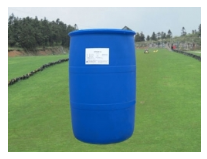The mechanism of biosurfactant promoting the degradation of organic pollutants and the interaction between biosurfactants and degrading bacteria and substrates are still unclear. Although biosurfactants promote microbial degradation, they also have some inhibitory factors. For example, some surfactants are toxic to microorganisms when the concentration is above CMC, and some biosurfactants colloidal particles can interfere with cell processes. Biosurfactant can also be used as a preferred carbon source to compete with the degradation of organic pollutants, resulting in a decrease in the degradation rate of pollutants. In addition, surfactants may cause the dispersion of microbial population and lead to different results. These mechanisms need to be further explored. A kind of
The advantages of biosurfactant production by fermentation are low production cost, variety and simple process, which is convenient for large-scale industrial production, but the separation and purification cost of the product is high.

Compared with microbial fermentation, the surfactants synthesized by enzymatic method are more simple in structure, but they also have good surface activity. It has the advantages of low extraction cost, convenient secondary structure improvement, easy purification and reuse of immobilized enzyme. Moreover, the surfactant synthesized by enzymatic method can be used to produce high value-added products, such as pharmaceutical components. Although the cost of enzyme preparation is high at present, it is expected to reduce the production cost by enhancing the stability and activity of enzyme by genetic engineering technology. A kind of
Many chemical synthetic surfactants destroy the ecological environment due to their difficult degradation, toxicity and accumulation in the ecosystem. In contrast, biosurfactants are more suitable for pollution control in environmental engineering due to their biodegradability and non-toxic to the ecological environment. For example: in the wastewater treatment process, it can be used as flotation collector to adsorb with charged colloidal particles to remove toxic metal ions and repair sites polluted by organic and heavy metals.
The type and yield of biosurfactants mainly depend on the species and growth stage of bacteria, the properties of carbon matrix, the concentration of N, P and metal ions Mg2 +, Fe2 + in the medium, and the culture conditions (pH, temperature, stirring speed, etc.). For example, Davis et al. Found that the maximum concentration (439.0 mg / L) of safantin could be obtained under the conditions of dissolved oxygen depletion and nitrogen limitation. Kitamoto et al. Used resting cells of Candida Antarctica to produce mannose erythritol. After optimizing the culture conditions, the highest yield could reach 140 g / L.